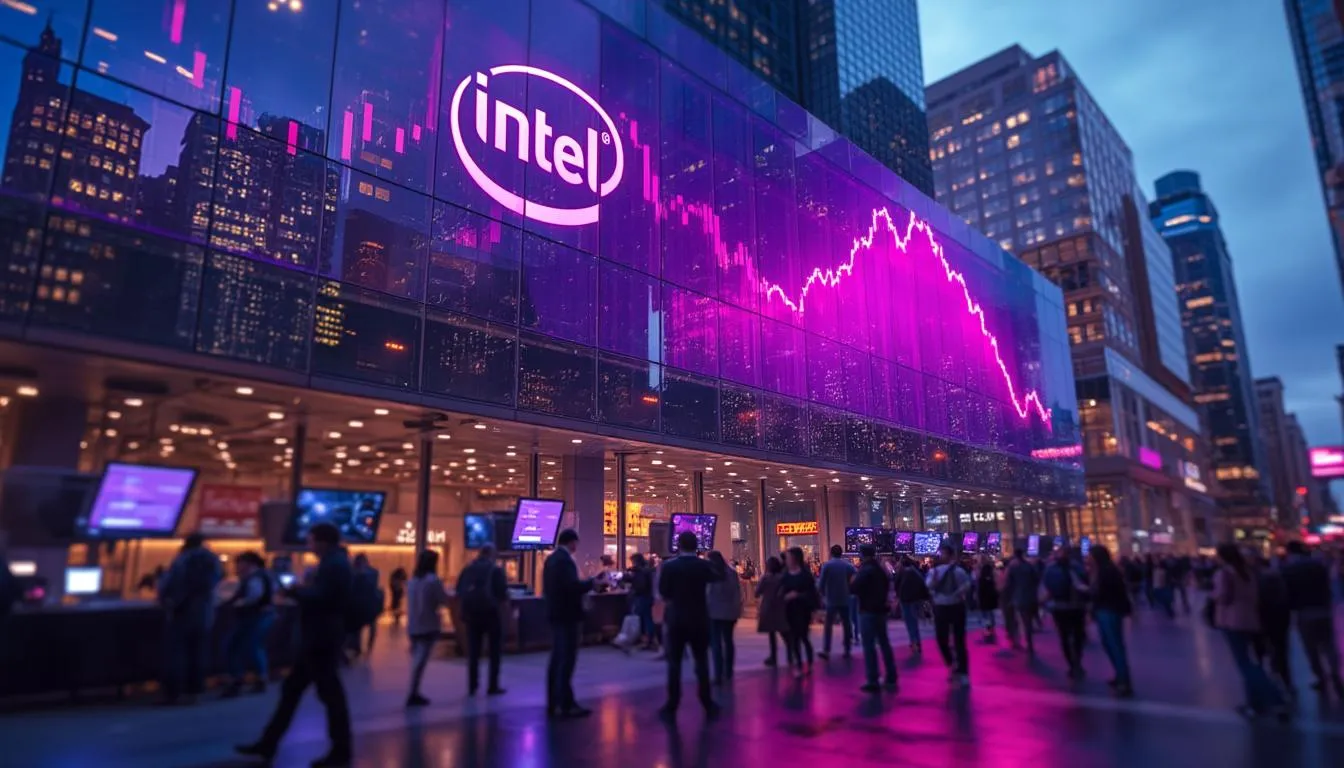Semiconductor Giant Faces Crosscurrents as Government Talks and Market Volatility Weigh on Shares
Intel Corp (INTC), a cornerstone of the global semiconductor industry, finds itself at the center of market attention today — for reasons both promising and perilous. With shares down sharply by 3.48% to $23.66 in heavy trading (volume: 184,412,902), Intel stands out as one of the day’s most significant laggards within the technology sector. The company, known for its dominance in microprocessors and expanding ambitions in foundry services, is not just grappling with cyclical industry headwinds. Fresh headlines about a potential 10% U.S. government stake — a historic development tied to the CHIPS Act — have added a layer of complexity to the market’s assessment of Intel’s future.
Key Takeaways
Sharp Decline: Intel stock is down 3.48% on the session, underperforming both the tech sector and the broader market.
Unusual Volume: Trading volume is nearly double the 90-day average, signaling heightened institutional and retail activity.
Government Involvement: Reports indicate the White House is in talks for a 10% equity stake in Intel, leveraging CHIPS Act funding.
Options Surge: Options activity has spiked, with traders betting on a near-term rebound despite the selloff.
Support Levels: Technical traders note that the $18 region has historically provided a floor for Intel shares, tempering panic selling.
Market Moves in Context: Why Intel Is in the Spotlight
As an industry bellwether, Intel’s movements often signal broader trends in the semiconductor space. Today’s price action, however, is far from routine. The 3.48% slide, coming on the heels of government intervention headlines and outsized trading volume, suggests a market grappling with both new risks and potential government-backed rewards.
Performance Review: Under the Microscope
Metric | Value |
|---|---|
Price (Current) | $23.66 |
Previous Close | $24.56 |
Change (%) | -3.48% |
Volume | 184,412,902 |
Intel’s drop is particularly notable considering the broader market’s modest decline. While the S&P 500 is only slightly lower, Intel’s stock is experiencing a much steeper correction. This divergence is amplified by the exceptional trading volume, hinting at institutional repositioning and possibly algorithmic trading responding to headline risk.
Historical Perspective
Intel’s shares have had a choppy year, with several rebounds from the $18 level acting as a technical backstop. However, the current selloff pulls the stock further from its recent highs and raises questions about confidence in management’s turnaround strategy and the market’s appetite for government equity involvement.
Analyst and Market Sentiment: Upgrades, Downgrades, and Uncertainty
Recent analyst commentary reflects a cautious but not outright bearish stance on Intel. There haven’t been major downgrades or sharp reductions in price targets, but the tone has shifted as investors digest the implications of government ownership.
"Semiconductor stock Intel Corp (NASDAQ:INTC) has had quite a choppy year so far, though the $18 region has kept pullbacks in check."
— Schaeffers Research
Options activity has surged, indicating that some traders are positioning for a rebound. This is consistent with the view that while the news has jarred the market, Intel’s core business — and its strategic importance to U.S. industrial policy — may limit downside over the medium term.
Sector and Market Context: The Chips Act and National Security
The most consequential development is the White House’s reported negotiations for a 10% government stake in Intel. According to the Wall Street Journal:
"Money earmarked for the chipmaker under the Chips Act could be converted into equity."
— WSJ, Tech
This would represent a historic shift in the U.S. government’s involvement in the private sector — especially in a company as critical as Intel. The CHIPS Act was intended to revitalize domestic semiconductor manufacturing, but converting grants into equity fundamentally alters the risk-reward calculus for shareholders.
The news has triggered a debate among analysts and portfolio managers. Some argue that government backing could provide Intel with the capital and political support needed to accelerate its foundry ambitions and compete with TSMC and Samsung. Others worry that government oversight could hinder innovation and strategic flexibility.
Options Market: Betting on a Rebound?
According to Schaeffer’s Research, options traders are actively targeting a rebound in Intel’s stock price. Elevated implied volatility and a spike in call option volume suggest that the market is not uniformly bearish — at least in the short term. This divergence between equity and options sentiment is worth monitoring, especially if headlines evolve quickly.
What’s Next? Investor Takeaways and Strategic Considerations
Intel’s outsized move today is emblematic of a market at a crossroads — balancing the promise of government support with uncertainty about what that support means for corporate governance, capital allocation, and long-term competitiveness. For self-directed investors, the key questions are:
Will a government stake ultimately stabilize or destabilize Intel’s turnaround efforts?
How will the market price in the possibility of further government intervention across the semiconductor sector?
Does today’s selloff represent a buying opportunity, or is it a harbinger of deeper structural issues?
Bottom Line: Intel’s Sector Role and Market Implications
Intel’s sharp decline, outsized volume, and headline-driven volatility make it the semiconductor sector’s most consequential laggard today. The historic prospect of U.S. government equity ownership introduces both new risks and opportunities for investors. While the $18 technical level has provided support in the past, today’s action underscores the market’s profound uncertainty about Intel’s future direction. For investors, the coming weeks will be crucial in assessing whether this is a transient bout of volatility — or the start of a new chapter for one of America’s most important technology companies.

.svg)
.svg)
.svg)
.svg)

.svg)

.svg)
















